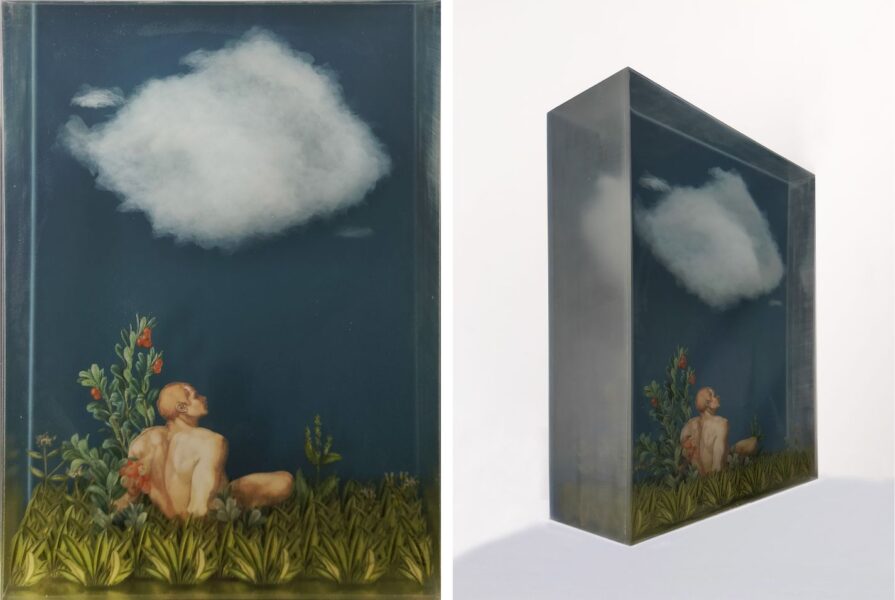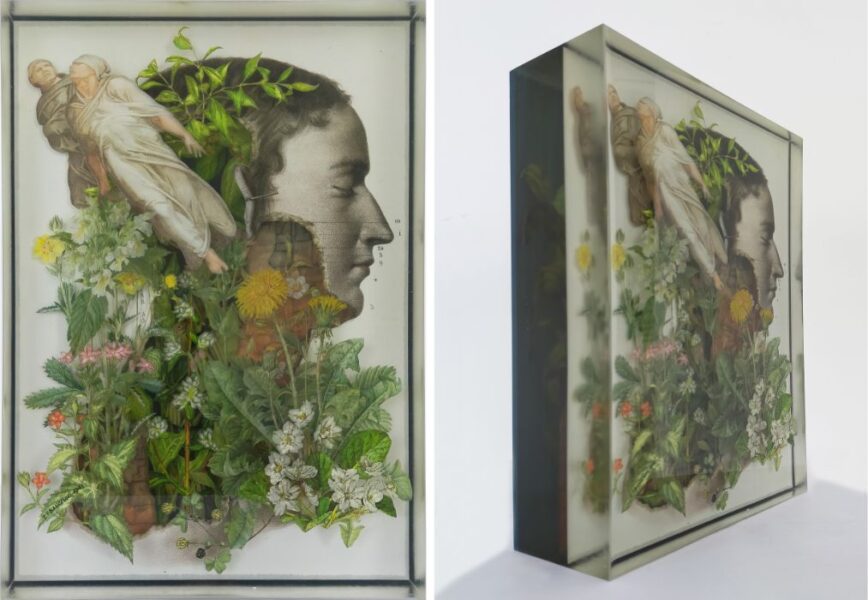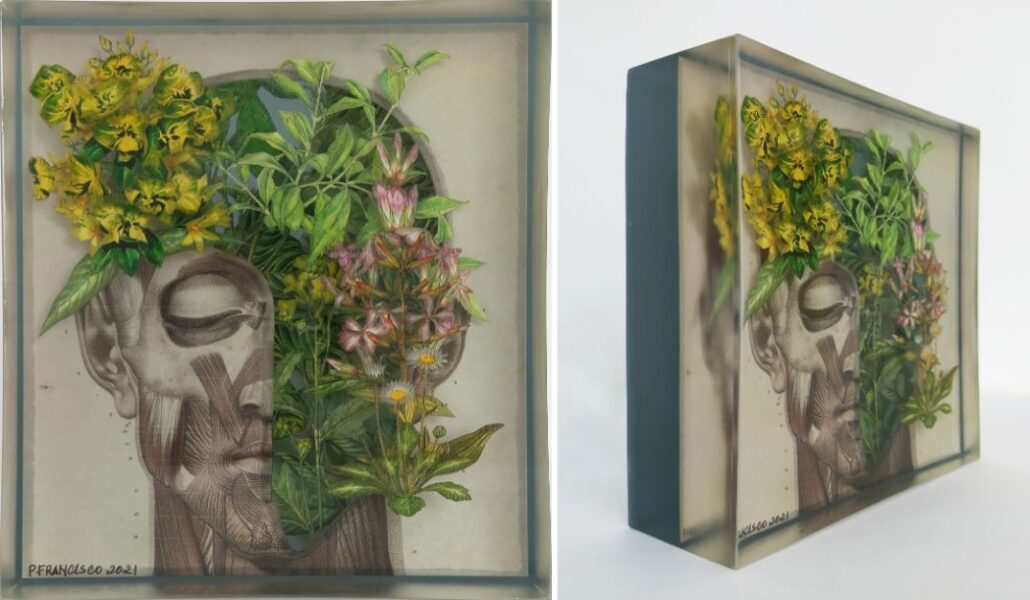
Overgrowth
Pancho Francisco
Fecundity of the Self
Collage is one of the early techniques taught to children to make art, an intuitive way of making sense of and building up from existing materials. Its origin may be traced to the Cubist experiments of Pablo Picasso and George Braque who added physical objects onto the canvas as a direct quotation of the world. From that point on, collage has become part of the arsenal of different artistic movements such as Dadaism to second-wave Feminism, achieving recognizable contemporary forms in assemblage, appropriation, and installation.
In the country, one of the few practitioners identified with the art of collage is Pancho Francisco who, for years, has been using cutouts to create his intoxicating works redolent with the rational beauty of a Classical painting. His choice of material is usually printed matter, like books and banknotes, whose references range from anatomy to botany to economics to art history. Through a process of layering, the artist meticulously arranges pieces of paper (and sometimes paints) on sheets upon sheets of clear resin, enabling the images to body forth and project out, achieving dimensionality, depth, and sense of space.
Such density in theme and technique marks Francisco’s latest exhibition, Overgrowth, which presents his cutouts primarily based on anatomical drawings. It centers on the inner world of man, either elevated or troubled by an emotion or a state of mind. It’s not hard to see how these works trace to a Biblical source. After all, the botanical “overgrowths” teeming in the works remind of the proverbial Eden, through which figures from Michelangelo’s Sistine Chapel mural emerge, suggesting the desire to escape to an ideal world. Even the titles of the works are inflected with this sense of flight: “Ascent,” “Euphoria,” “Rapture.”
In each work, a person, usually a male figure, has his eyes closed, shutting his attention away from the outside world to the interior realm marked by a cascade of botanical wonders. At the brink of transcendence, the individual recognizes the heft and power of the invisible paradoxically rendered as the lavish flourishing of creation. The revelation of a hidden paradise inside the skull renders in visual form what the priest and philosopher Pierre Teilhard de Chardin said: “We are not human beings having a spiritual experience; we are spiritual beings having a human experience.”
Though dark, difficult phases in the inner life such as “uncertainty” are acknowledged, the affirmation of spiritual truths in the works resounds more prominently. In light of the pandemic, climate change, and other devastations transpiring in the different parts of the world, perhaps a return to something irreducible and essential may provide some of the answers we are looking for. After all, what we see as reality is partly a projection of internal mechanisms and processes. Overgrowth soars into the depths of being human, suggesting that whatever we find there has the potential to spill over into our lives, fracturing the old and giving birth to the new.
-Carlomar Arcangel Daoana
Works
Documentation

















